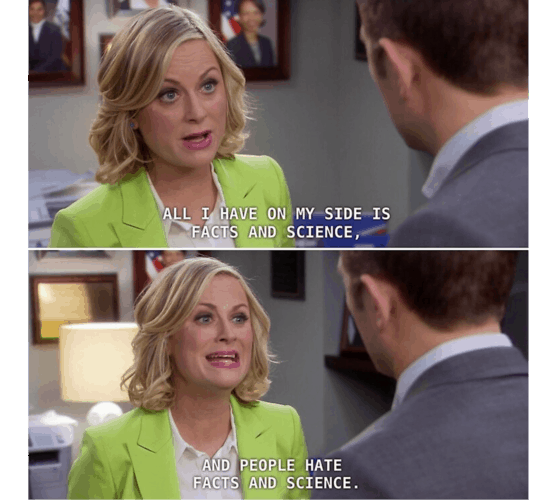By Shorouk Elkobros, IIASA Science Communications Fellow
Shorouk Elkobros shares her love for science communication and why she thinks it is pivotal for humanity.
Early 2020, I saw viral GIFs about social distancing and flattening the curve. I remember how useful and accessible it felt to have science communicated in such a fun and non-jargon way, especially during a global crisis.
In today’s post-truth world, misinformation campaigns travel fast. Hence, science communication’s role becomes pivotal to humanity. Anne Glover, the president of the Royal Society of Edinburgh, once said that “research not communicated is effectively research not done.”
What is science communication?
Science communication is the practice of educating and raising awareness of science-related topics. Science communicators, therefore, aspire to bridge the gap between science and the public and to inform decision makers.
But is it that easy?
You guessed it ̶ it is not. However, it is a challenge one would love to take on. Science communication is a constant game of problem solving.

Meme from the American sitcom television series Parks and Recreation | awwmemes.com
It is never about dumbing down information but rather about making it concise and clear. It requires a decent amount of practice, careful attention to language, and a deep understanding of the audience.
Enticing readers with clickbait information and sensationalized or misleading facts has almost pushed the reputation of science communication under the bus. Examples include the COVID-19 conspiracy theories that emerged amid the pandemic or climate change deniers’ campaigns that share fake scientific news to mislead the public.
Why I love science communication?
I come from a science background and a love for visual storytelling. After earning my master’s degree in climate sciences, I chose to become a science communicator because it brings me joy to make science relatable and fun for the public. For me, science communication is a great way to mainstream climate action.
In 2019, I worked closely with the CLICCS B1 team at the University of Hamburg, Germany, where I investigated how our imaginations of possible and plausible climate futures are socially and culturally constituted and embedded in broader visions of the future and belief systems. One thing I learned was that the mainstream media either tones down the climate crises or spreads alarming and apocalyptic messages. It was an eye-opening experience to investigate how climate change is communicated in the media and to recommend amends. However, I always wanted to practice what I preached. I was lucky to volunteer as an editor on the Climate Matters blog and as a video editor in conferences such as Tropentag 2019. The sense of satisfaction that I felt every time I worked on an article or a video made me realize that I want to pursue a career in science communication.
IIASA Science communication
In 2020 I was looking for opportunities to embark on a science communication learning journey to become a better science writer and a better storyteller. Having the chance to do a Science Communication Fellowship at IIASA was an experience that I hold near and dear to my heart. This program is targeted towards early career science communicators who want to sharpen their science communication skills. It was the perfect opportunity for me to transition from academia to the practical field.
Working closely with researchers to produce content on blogs, videos, and news-in-brief articles in the Options magazine 2020 winter edition gave me an excellent perspective on environmental, economic, technological, and social change all around the globe. Knowing that my work can provide the needed information to policymakers is so rewarding because I know it can make a change in the years to come. Interviewing early career researchers and IIASA Young Scientists Summer Program alumni, and listening to them discussing their work and future aspirations was awe-inspiring. I think my favorite project was producing a video on the biodiversity work done at IIASA because I was able to look beyond the research and highlight the researchers behind it. I figured one way people would relate to the science is if I put a human face to it.
Working as part of the IIASA communications team has been a blast. For this blog, I asked my team members why they love science communication, and here are some of my favorite replies:


 Communicating research addressing issues such as food and water security, biodiversity, or climate change can boost regenerative economies and decentralized renewable energy systems. It then becomes pivotal for humanity to give a voice to young people, grassroots movements, and people of color. Historically, researchers involved in outreach gave science communication its modern shape. Today, I think we live in a golden age of science communication. There are more thought-provoking science stories than ever before. Scientists blogging about science, science communicators using social media to promote recent publications, and storytellers creating science-oriented videos or designs, are all doing magnificent work, and I am lucky to count myself as one of them.
Communicating research addressing issues such as food and water security, biodiversity, or climate change can boost regenerative economies and decentralized renewable energy systems. It then becomes pivotal for humanity to give a voice to young people, grassroots movements, and people of color. Historically, researchers involved in outreach gave science communication its modern shape. Today, I think we live in a golden age of science communication. There are more thought-provoking science stories than ever before. Scientists blogging about science, science communicators using social media to promote recent publications, and storytellers creating science-oriented videos or designs, are all doing magnificent work, and I am lucky to count myself as one of them.

@ Lennart Wittstock | Pexels.com
Note: This article gives the views of the author, and not the position of the Nexus blog, nor of the International Institute for Applied Systems Analysis.

You must be logged in to post a comment.